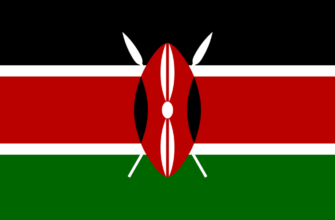The flag of Guinea reflects historical events and carries information about local nature. Symbolism and colors are particularly important to the formation and culture of the country.
This is what the flag of Guinea looks like:

History of the flag
In 1895 Guinea became part of French West Africa, while in 1904 the colonial boundaries were determined after the transfer of the island of Los to the French by the British. France deprived Guineans of political rights during the period of the colony. The inhabitants of the state were forced to pay taxes as well as work without pay and serve in the army.
An elected territorial assembly in Guinea was established in 1946 by the French government. The conditions for those wishing to vote gradually changed. The adult population living in the colony turned out for the 1957 elections.
Synopsis. A Council of Government was formed, a body of executive power that included Guineans.
The Democratic Party of Guinea (DPG), led by the figure Sekou Toure, expanded its sphere of influence. Thanks to active propaganda methods, almost the entire population of the country in a referendum in 1958 opposed the creation of a new French constitution and wished to secede from the French Community.
The Republic of Guinea became independent on October 2, 1958, and on November 10, the flag was recognized as the official symbol of the state. As the basis of the chosen flag of France, consisting of three vertical stripes, but the colors were changed to Pan-African. The symbol of the new state is similar to many other flags of African countries that became independent at about the same time as Guinea.
Description of the flag of Guinea
The cloth has a rectangular shape with proportions of 2:3. The stripes on the flag of the Republic of Guinea are of equal width and are arranged vertically: red on the left, yellow in the middle, and green on the right. These colors are called pan-African colors.
Colors of the Guinean flag
The flag of the Republic of Guinea is rectangular in shape and consists of three vertical stripes of equal length and width, each with a different color. Starting from left to right, there are red, yellow and green stripes.
Meaning of the colors of the flag
The red color of the stripe located on the flag on the left has a traditional meaning for Africans. It symbolizes the blood that the local people shed in the long struggle for the independence of their state. In addition, red has a meaning for the inhabitants of the country, as associated with the labor of factory workers and farmers.
The stripe in the center is colored in yellow, which is identified with the abundance of resources of the republic. The color also reflects the scorching hot sun of Africa, which in a way symbolizes the equality of the peoples, due to the fact that everyone equally receives heat from the heavenly body.
The right stripe is colored in green. This in turn represents the rich nature of the country and vegetation: forests, savannah and other natural resources. In addition, green represents the prosperity of Guinea and the fertility of the nation’s lands.
Among other things, the colors of the flag are associated with the motto of the republic: “Labor. Justice. Solidarity”.
Red, yellow and green are the most common colors found on the flags of African countries. The colors were adopted and named Pan-African on August 13, 1920. Information about this is contained in the Declaration of the Rights of Black People. The Pan-African flag containing the above colors was created by Marcus Garvey, who is the founder of the League of African Communities.
General information about Guinea
| Official language | French |
| Capital | Conakry |
| Territory | 245,857 km2 |
| Population | 12,395,924 people |
| Currency | Guinea franc |
| Phone Code | +224 |









